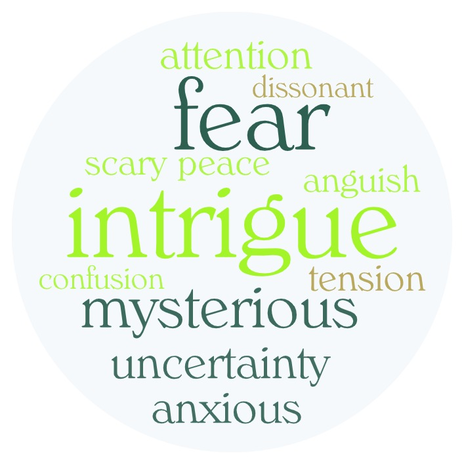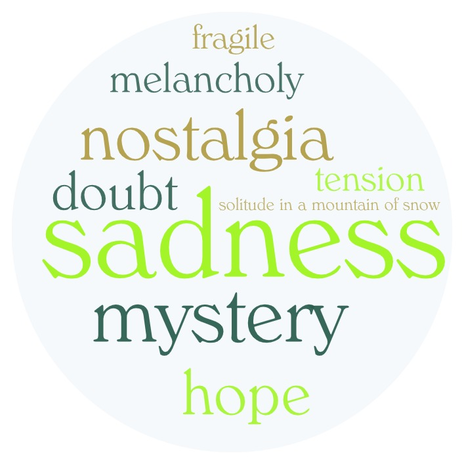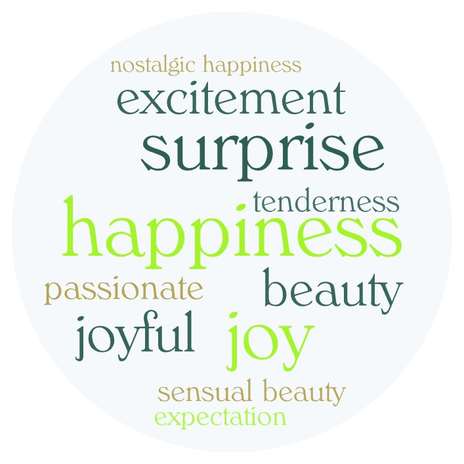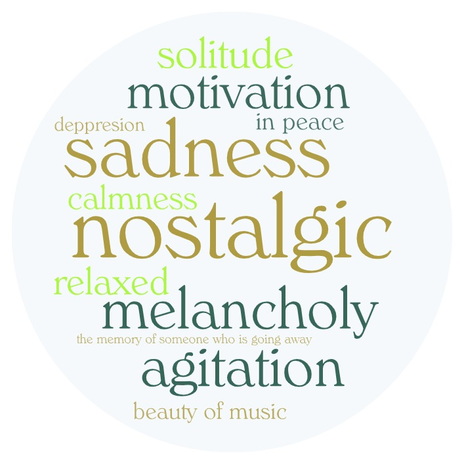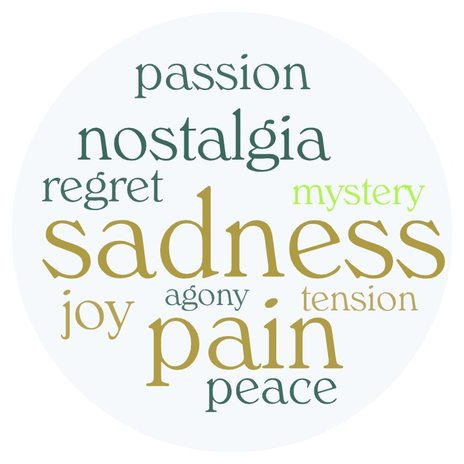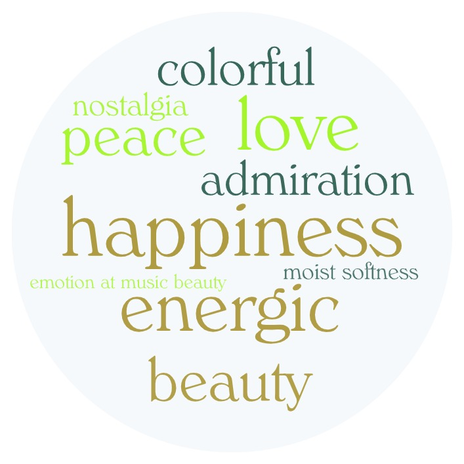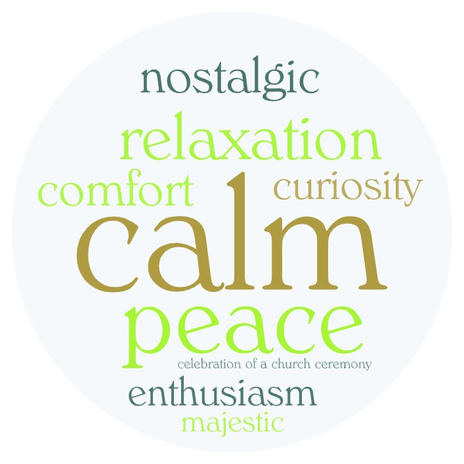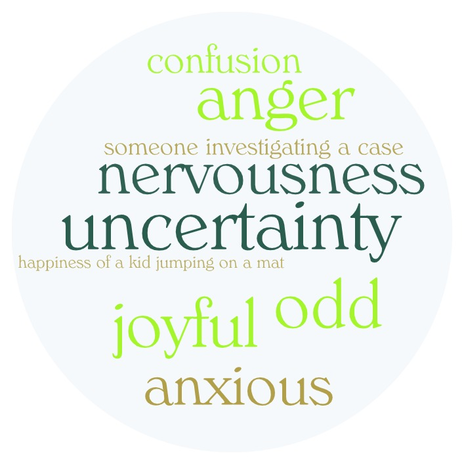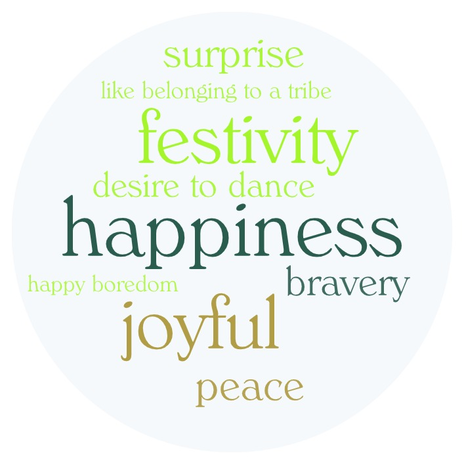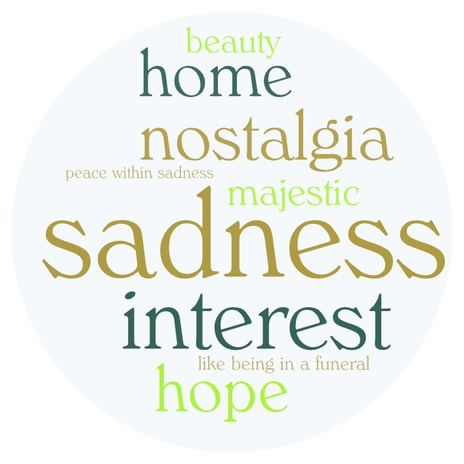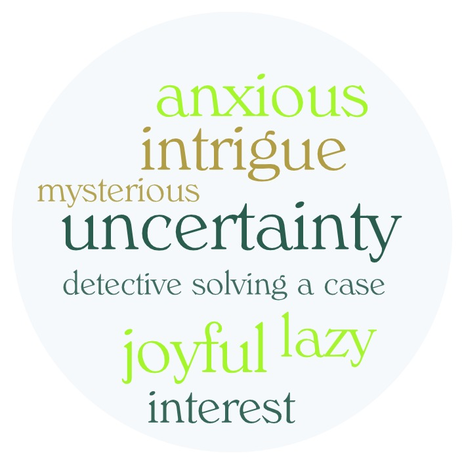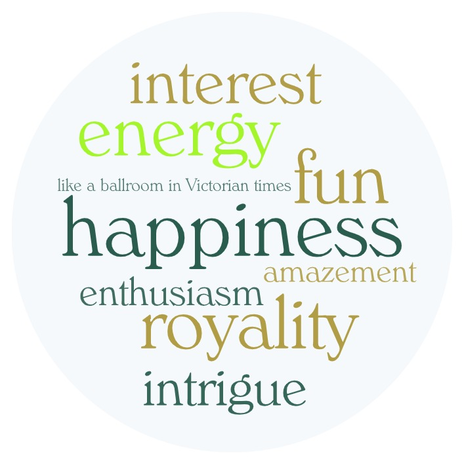For the rest of the pieces, whose word clouds you can see below, both the perceptions and the reactions were quite standard, similar to the ones displayed in the non-musicians sessions. This could be indeed a noteworthy conclusion: the description of the emotional engagement does not change too much between the two groups. However, as I deduced at the beginning of the Musicians section, a non-expert but interested in music audience and another one of still young musicians could be close to each other, so I would prefer not to generalize these 'similarities' of emotional engagement.
(5. C. Results. II)
MUSICIANS SESSIONS: (3) QUALITATIVE RESULTS
As you could see in the previous Non-Musicians section, I designed some word clouds to show the results of the question related to the emotional thoughts of the audience. In this case, more than explaining each word cloud, I will point out appealing differences between the versions of the fragments that were played twice regarding both emotional questions: the emotions felt and the reactions caused.
Regarding the two versions of Bach's Chaconne beginning (2) and (6) in terms of emotional perception, I think that the main difference lies in a more peaceful reception of the second version (whose interpretation was consciously slower). Words that appeared in the first playing like 'nervousness' or 'strong' disappear, and emotions or feelings closer to 'majesty' or 'home' replace them. Something similar occurred with the reactions. Since regarding the first version some answers pointed up sensations related to 'tension' ('agitated beating', 'frowning'), these vanish for the second one. This second performance was the most convincing one in terms of engagement as well (8 vs 7).
The answers to Prokofiev's recitando fragments (4) and (13) match the poor emotional engagement or satisfaction with the piece and the fact that the second hearing was even less convincing. Only subtle reactions were identified by the listeners, almost all of them related to 'alertness', 'attention', or 'nervousness'. Even the felt emotions had to do in some cases with the sensation of 'confusion'.
Between the two Sibelius versions (1) and (12), I can see that more listeners could describe (also better) the feelings entailed in the first execution rather than in the second, but the opposite in terms of the physical/mental reaction. Some of them actually acknowledged that they experienced an increase in their concentration levels this second time. For instance, a participant could recognize a "cold feeling" during this second performance. What I think, also taking into account the astonishing score of this second Sibelius' beginning engagement (9.15), is that the experiment reached its maximum point of 'magic' within this moment, after a whole session of testing and changes.
The perception of both Tchaikovsky's Concerto beginning (3) and (11) did not vary at all: most of the answers included terms like 'happy', 'surprise', 'energy', 'smiles', 'goosebumps'... Perhaps it is remarkable that for the second version the adjective 'colorful' is mentioned, which fits the 'dynamics manipulation' idea that I explored. Both versions received a pretty similar evaluation.
